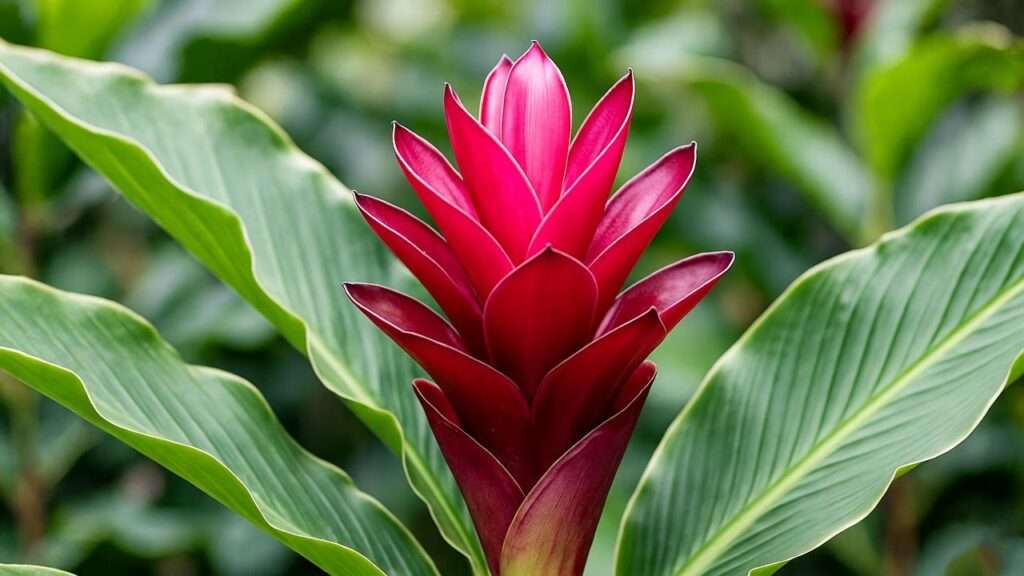Imagine transforming your garden or living space with the fiery elegance of a red ginger plant, its bold red bracts stealing the spotlight in any setting. Whether you’re a seasoned gardener or a beginner, the Alpinia purpurata, commonly known as the red ginger plant, offers a stunning way to bring tropical flair to your home or yard. This comprehensive guide dives deep into everything you need to know to grow and care for this exotic beauty, from ideal growing conditions to troubleshooting common issues. Backed by horticultural expertise and practical experience, this article will empower you to cultivate vibrant red ginger plants that bloom spectacularly year after year. Let’s unlock the secrets to thriving red ginger! 🌸
1. Understanding the Red Ginger Plant 🌸
1.1 What Is the Red Ginger Plant?
The red ginger plant, scientifically known as Alpinia purpurata, is a tropical perennial native to Malaysia and the Pacific Islands. Renowned for its vibrant red or pink bracts, glossy green leaves, and statuesque growth (reaching 6-8 feet outdoors), it’s a favorite in tropical gardens and as an indoor ornamental plant. Contrary to common belief, the showy red “flowers” are actually bracts—modified leaves that encase small, white true flowers. This plant holds cultural significance, often used in Hawaiian leis and as a symbol of hospitality in tropical regions. Its versatility makes it ideal for both novice and expert gardeners seeking a low-maintenance yet striking addition to their spaces.
1.2 Varieties of Red Ginger
Red ginger comes in several varieties, each with unique traits:
- Red Ginger (Alpinia purpurata): The classic variety with bold red bracts, perfect for outdoor tropical gardens.
- Pink Ginger: Features softer pink bracts, ideal for subtle elegance.
- Dwarf Red Ginger: A compact variety suited for containers or smaller spaces, growing to about 3-4 feet.
Choosing the right variety depends on your climate and space. For instance, dwarf varieties thrive indoors or in small patios, while standard red ginger shines in spacious gardens. Expert Tip: Select a variety based on your USDA hardiness zone (9-11 for outdoor planting) to ensure optimal growth.
2. Ideal Growing Conditions for Red Ginger 🌞
2.1 Light Requirements
Red ginger plants thrive in bright, indirect sunlight or partial shade, mimicking their natural tropical habitat. Outdoors, they prefer 4-6 hours of filtered sunlight, ideally under taller plants or a canopy. Indoors, place them near a south-facing window with sheer curtains to diffuse intense rays. Direct midday sun can scorch leaves, causing brown, crispy edges. If you notice faded bracts or leggy growth, your plant may need more light. Adjust its position gradually to avoid shock, and consider grow lights for indoor plants during winter months.
2.2 Temperature and Humidity
As a tropical plant, red ginger loves warmth and humidity. Maintain temperatures between 65-85°F (18-29°C), as anything below 50°F can stunt growth or cause leaf drop. Frost is a red ginger’s worst enemy, so protect outdoor plants in cooler climates. Humidity is equally critical, with 50-70% humidity ideal to prevent dry, curling leaves. For indoor plants, use a humidifier, place a pebble tray with water beneath the pot, or mist leaves weekly. In dry climates, grouping plants together can create a microclimate with higher humidity. Practical Solution: Check your local weather app for humidity levels and adjust care accordingly.
2.3 Soil Preferences
Red ginger thrives in well-draining, slightly acidic soil with a pH of 5.5-6.5. A mix of potting soil, peat moss, and perlite ensures proper drainage and aeration. For outdoor planting, amend garden soil with organic compost to boost nutrients. Avoid heavy clay soils that retain water, as they can lead to root rot. Expert Insight: Test your soil’s pH with a home kit (available at garden centers) and add sulfur to lower pH if needed. For potted plants, choose containers with drainage holes to prevent waterlogging.
3. Planting and Propagation Techniques 🌱
3.1 Planting Red Ginger
Spring or early summer is the best time to plant red ginger, as warm temperatures encourage root establishment. Follow these steps for success:
- Choose a Location: Select a spot with partial shade and well-draining soil (outdoors) or a pot at least 12-14 inches wide (indoors).
- Plant Rhizomes: Bury rhizomes 1-2 inches deep with growth buds facing up. Space plants 2-3 feet apart for air circulation.
- Water Thoroughly: Keep soil moist but not soggy after planting.
For containers, ensure pots have drainage holes and use a high-quality potting mix. Outdoor plants benefit from a layer of organic mulch to retain moisture.
3.2 Propagating Red Ginger
Red ginger is easy to propagate via rhizome division or stem cuttings. Rhizome division is the most reliable method:
- Dig Up Rhizomes: Carefully unearth a mature plant (at least 1-2 years old).
- Divide Rhizomes: Use a clean, sharp knife to separate healthy rhizomes, ensuring each piece has roots and at least one growth node.
- Replant: Plant divisions in fresh soil, water well, and place in a warm, shaded area.
Success Tip: Keep propagated plants consistently moist for the first 4-6 weeks to encourage rooting. Stem cuttings are less common but can work with a rooting hormone and high humidity.
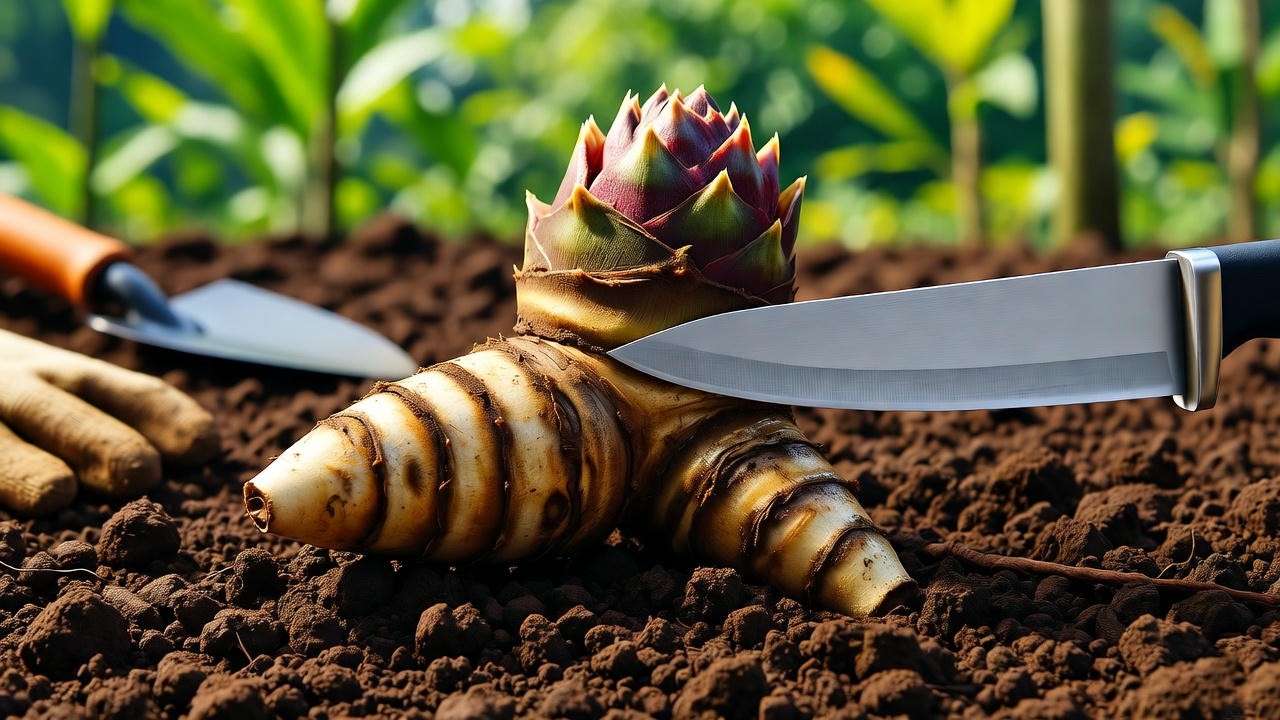
4. Essential Care Tips for Red Ginger 🌼
4.1 Watering Needs
Red ginger prefers consistently moist soil without waterlogging. Outdoors, water 2-3 times weekly during dry periods, ensuring the top inch of soil remains damp. Indoors, check the soil weekly and water when the top inch feels dry. Overwatering leads to yellowing leaves and root rot, while underwatering causes wilting or drooping. Use a moisture meter for precision, especially for potted plants. In humid climates, reduce watering frequency but monitor soil conditions. Warning Sign: If leaves turn brown at the tips, increase humidity or adjust watering.
4.2 Fertilizing for Vibrant Blooms
To encourage lush foliage and vibrant bracts, fertilize red ginger every 4-6 weeks during the growing season (spring to summer). Use a balanced liquid fertilizer (10-10-10) diluted to half-strength or a slow-release granular fertilizer. Avoid over-fertilizing, as excess nitrogen can lead to leafy growth at the expense of blooms. In fall and winter, reduce or stop fertilizing to allow the plant to rest. Expert Advice: Apply fertilizer to moist soil to prevent root burn, and consider organic options like fish emulsion for eco-friendly care.
4.3 Pruning and Maintenance
Pruning keeps red ginger healthy and attractive. Remove dead or yellowing leaves and spent flower stalks with clean, sharp shears, cutting at the base. Prune lightly in spring to shape the plant and encourage new growth. For outdoor plants, remove debris around the base to prevent pests. In winter, reduce watering and protect plants from cold drafts or frost. Maintenance Tip: Wipe indoor plant leaves with a damp cloth to remove dust and improve photosynthesis.
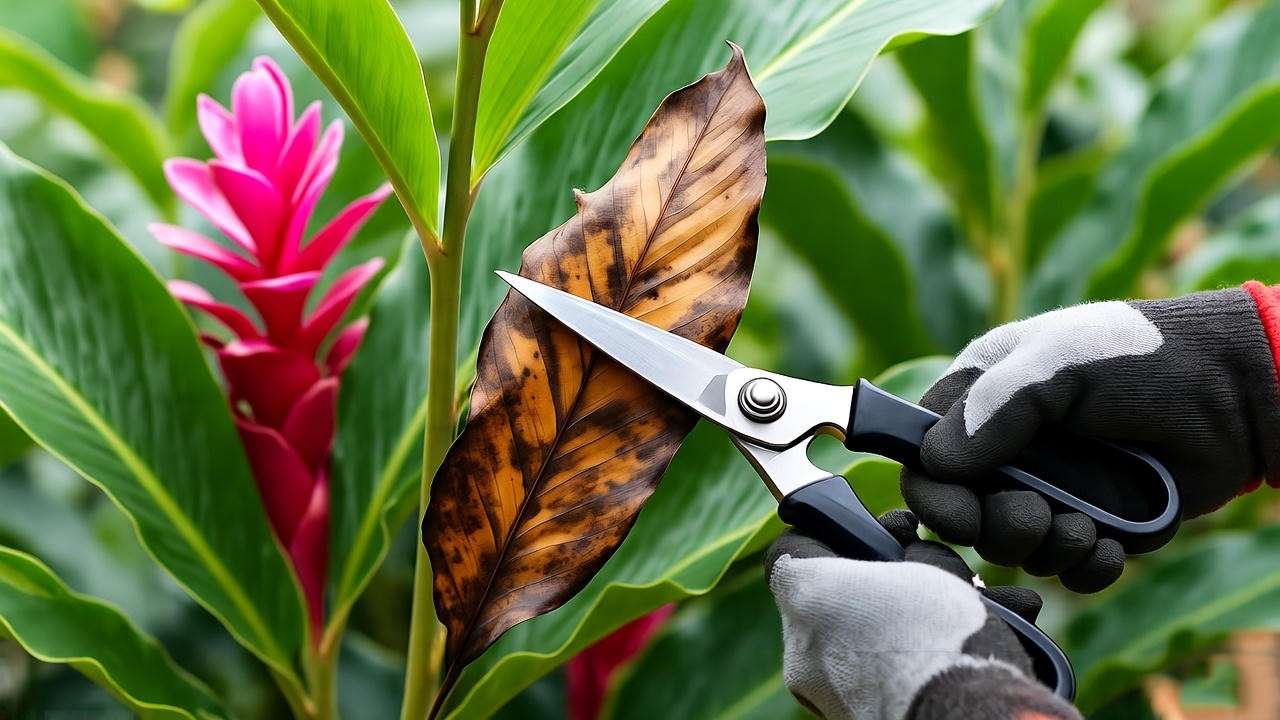
5. Common Problems and Solutions 🐞
5.1 Pests and Diseases
Red ginger is relatively pest-resistant but can attract spider mites, aphids, and mealybugs. Inspect leaves regularly for tiny webs, sticky residue, or white cottony patches. Treat infestations with neem oil or insecticidal soap, applied in the early morning or late evening. For diseases, root rot (caused by overwatering) and fungal leaf spots (from high humidity and poor air circulation) are common. Prevent root rot by ensuring proper drainage and avoid overhead watering to reduce fungal issues. Prevention Tip: Maintain good air circulation by spacing plants appropriately.
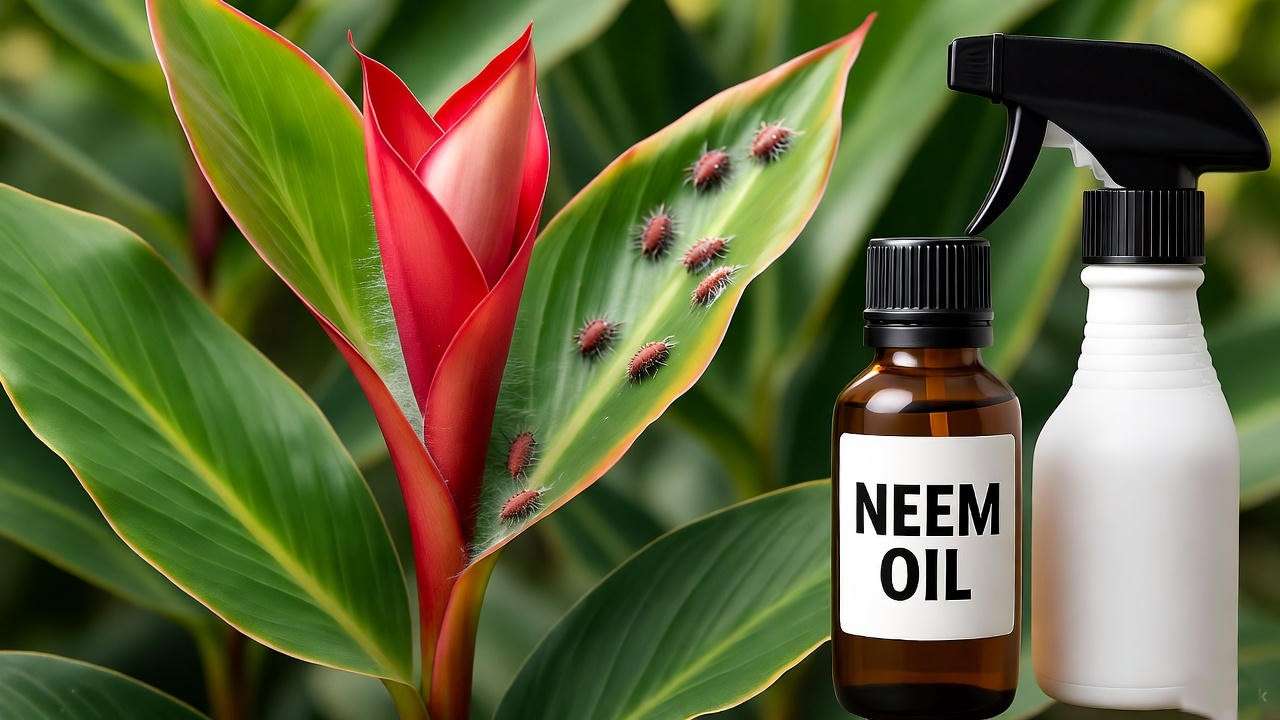
5.2 Troubleshooting Growth Issues
- Problem: No Blooms
- Causes: Insufficient light, nutrient deficiency, or young plants (red ginger may take 1-2 years to bloom).
- Solutions: Move to a brighter location, fertilize regularly, and ensure the plant is mature enough.
- Problem: Wilting or Yellow Leaves
- Causes: Overwatering, low humidity, or temperature stress.
- Solutions: Adjust watering, increase humidity with a pebble tray, and keep temperatures above 60°F.
Expert Insight: Keep a care journal to track light, water, and fertilizer schedules, helping you pinpoint issues quickly.
6. Red Ginger in Landscaping and Home Decor 🏡
6.1 Outdoor Landscaping Ideas
The red ginger plant is a showstopper in tropical and coastal gardens, adding vibrant color and architectural structure. Its bold red bracts make it ideal for borders, focal points, or as a backdrop in mixed plantings. Pair red ginger with complementary tropical plants like hibiscus, bird of paradise, or ferns to create a lush, jungle-like aesthetic. For a dramatic effect, plant red ginger in clusters or rows along pathways or near water features, where its reflection enhances its beauty. Design Tip: Use mulch like bark or coconut husk around the base to retain moisture and add a polished look to your garden bed. In USDA zones 9-11, red ginger thrives year-round outdoors, but in cooler climates, consider planting in pots to bring indoors during winter.
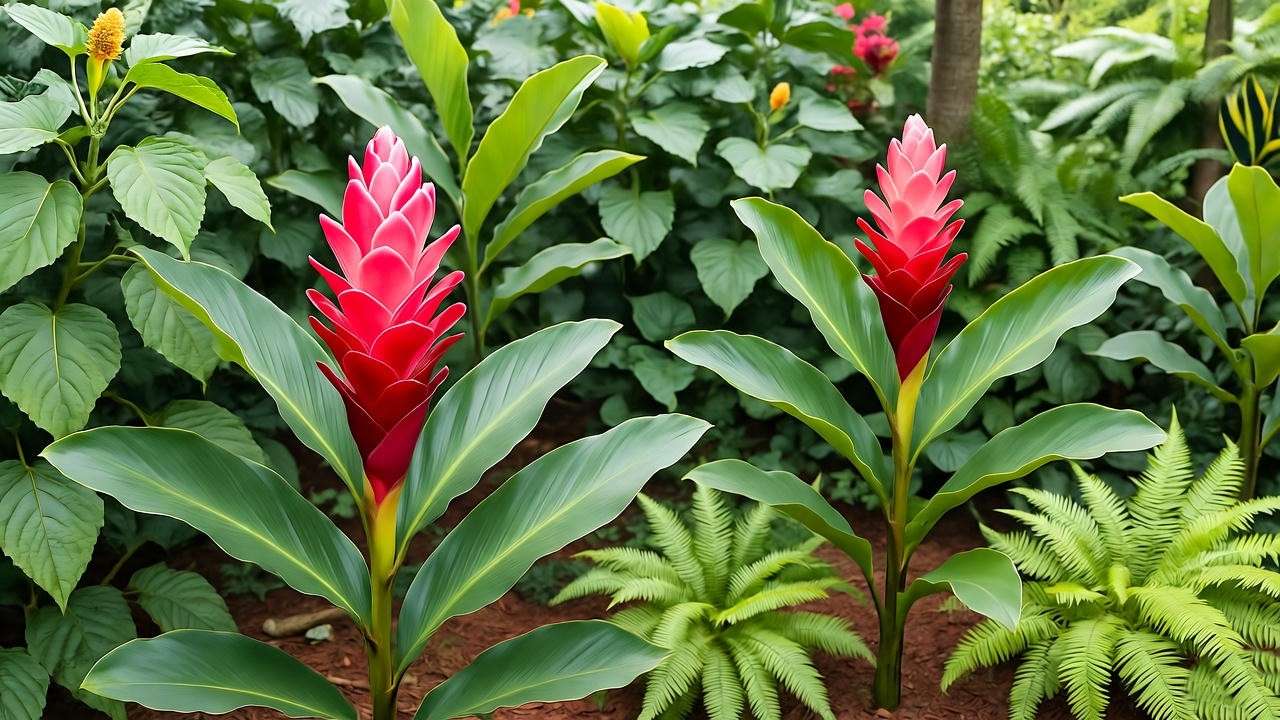
6.2 Indoor Decor with Red Ginger
Indoors, red ginger transforms living spaces into tropical retreats. Place potted plants in bright corners, patios, or near large windows to maximize light exposure. Choose decorative ceramic or terracotta pots in neutral tones to highlight the plant’s vivid red bracts and glossy green leaves. For small spaces, opt for dwarf red ginger varieties, which stay compact yet deliver the same exotic charm. Rotate pots every 2-3 weeks to ensure even light exposure, preventing lopsided growth. Styling Idea: Pair red ginger with neutral or earthy decor to create a serene, tropical vibe, or use it as a statement piece in minimalist rooms. Regular misting and a pebble tray will keep indoor plants thriving in dry environments.

7. Expert Insights and Pro Tips 🌟
Drawing from years of experience growing tropical plants and insights from botanical research, here are some advanced tips to elevate your red ginger care:
- Mimic the Tropics: “Red ginger thrives when you replicate its native humid, warm environment,” says Dr. Leilani Katoa, a tropical horticulturist with over 15 years of experience. “Consistency in watering and humidity is key to unlocking its full potential.”
- Mulching Matters: For outdoor plants, apply a 2-3 inch layer of organic mulch (like wood chips or compost) to regulate soil temperature and retain moisture, especially in hot climates.
- Sustainability Focus: Use eco-friendly practices like collecting rainwater for irrigation or applying organic fertilizers like compost tea to reduce environmental impact.
- Fun Fact: The red ginger’s vibrant bracts aren’t true flowers but specialized leaves that protect small white flowers inside. This unique structure makes them long-lasting in arrangements and gardens.
Pro Tip: If blooms are sparse, try a bloom-booster fertilizer with higher phosphorus (e.g., 10-20-10) to encourage flowering without overstimulating leaf growth.
8. FAQs About Red Ginger Plant Care ❓
Q: How long does it take for red ginger to bloom?
A: Red ginger typically blooms 1-2 years after planting, depending on light, nutrients, and plant maturity. Young rhizomes may need time to establish before producing bracts. Ensure optimal conditions—bright indirect light and regular fertilization—to speed up blooming.
Q: Can red ginger grow indoors year-round?
A: Yes, red ginger thrives indoors year-round with bright, indirect light, high humidity (50-70%), and consistent care. Use a humidifier or pebble tray in dry climates, and place near a south-facing window for best results.
Q: Is red ginger safe for pets?
A: Red ginger is non-toxic to cats and dogs, according to the ASPCA. However, ingestion may cause mild stomach upset, so keep plants out of reach of curious pets.
Q: How do I overwinter red ginger in cold climates?
A: In zones below 9, bring potted red ginger indoors before the first frost. Place in a warm, bright spot (65-75°F) and reduce watering slightly. For outdoor plants, cover with frost blankets or mulch heavily to protect rhizomes, and consider digging them up for indoor storage in extreme cold.
Q: Why are my red ginger leaves curling?
A: Curling leaves often indicate low humidity or underwatering. Increase humidity with a humidifier or misting, and check soil moisture to ensure it stays consistently moist but not soggy.
9. Conclusion and Call to Action 🌴
The red ginger plant is a breathtaking addition to any garden or home, offering vibrant beauty with surprisingly straightforward care. By providing bright, indirect light, consistent moisture, high humidity, and occasional fertilization, you can cultivate a thriving red ginger that rewards you with stunning bracts year after year. Whether you’re creating a tropical oasis outdoors or adding exotic flair indoors, this guide equips you with expert-backed strategies to succeed. Start growing your red ginger plant today and watch your space transform into a vibrant paradise!
Have questions or tips to share? Drop them in the comments below, and let’s keep the conversation growing. Explore our other plant care guides for more inspiration, and subscribe to our newsletter for weekly gardening tips. Follow us on social media for stunning garden ideas and share your red ginger journey with #TropicalGardening! 🌺

